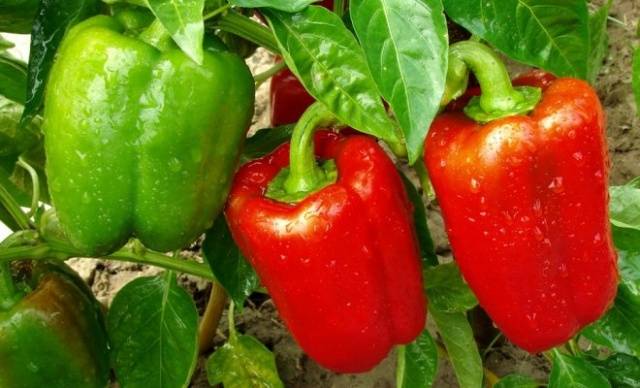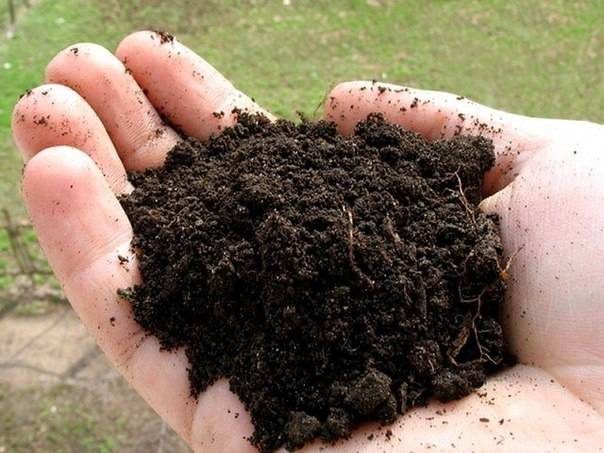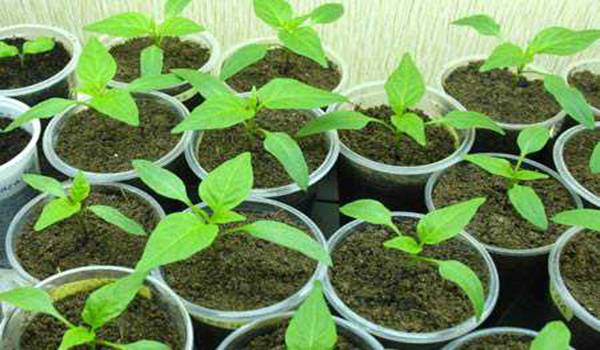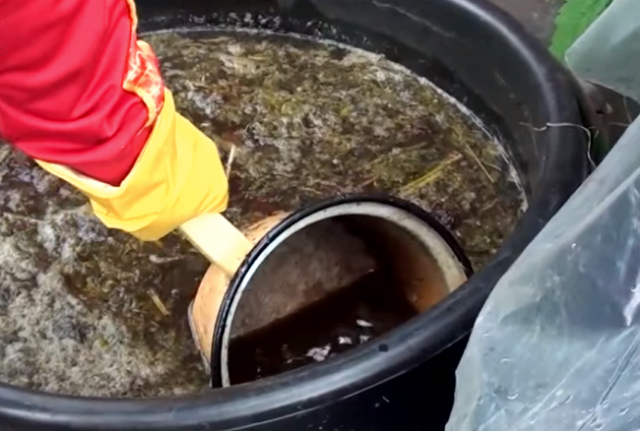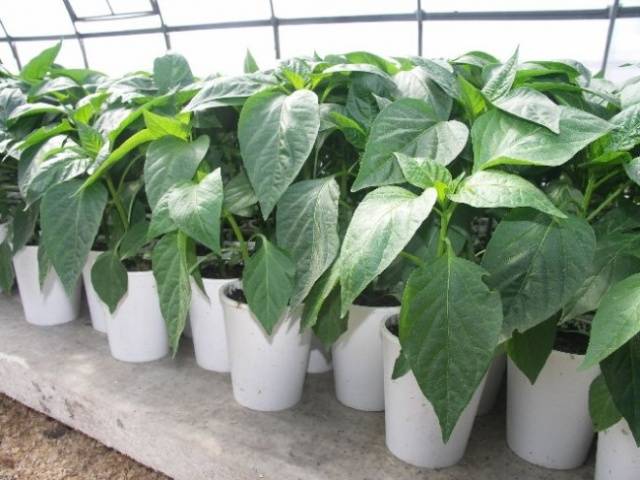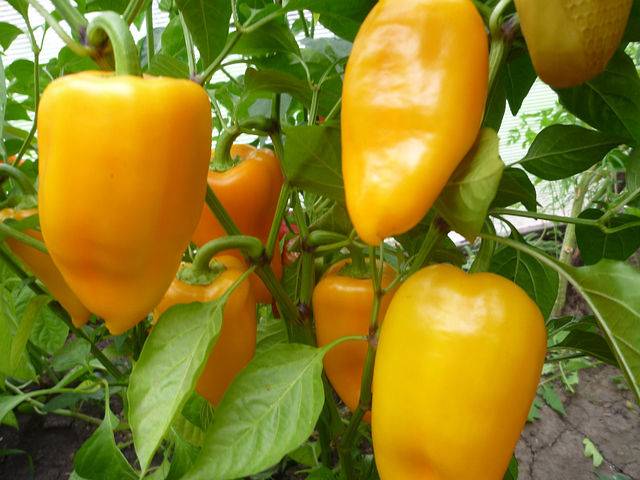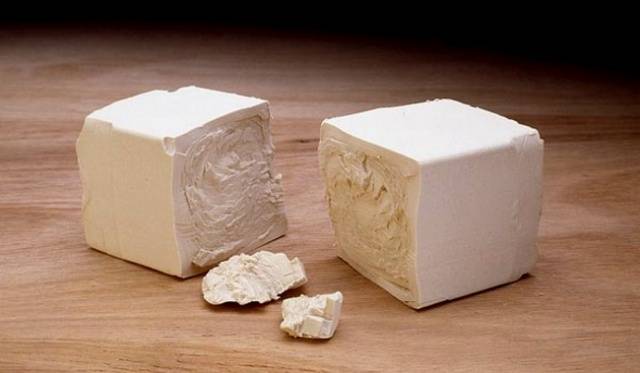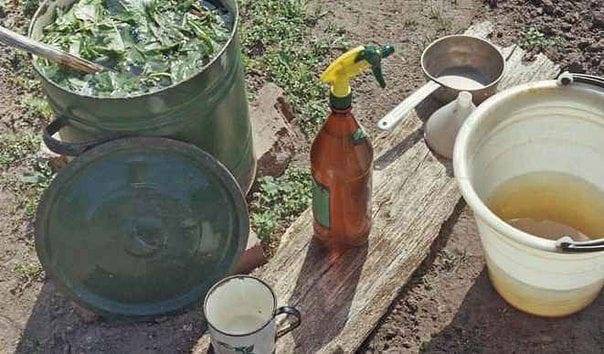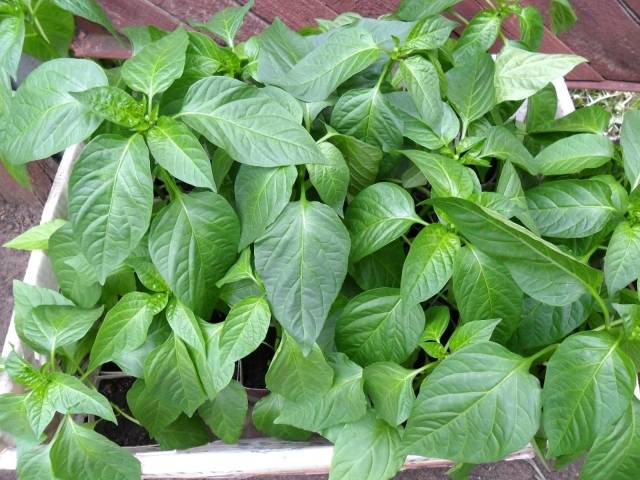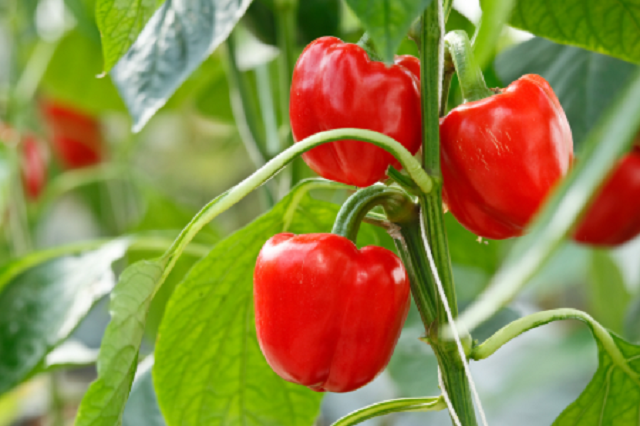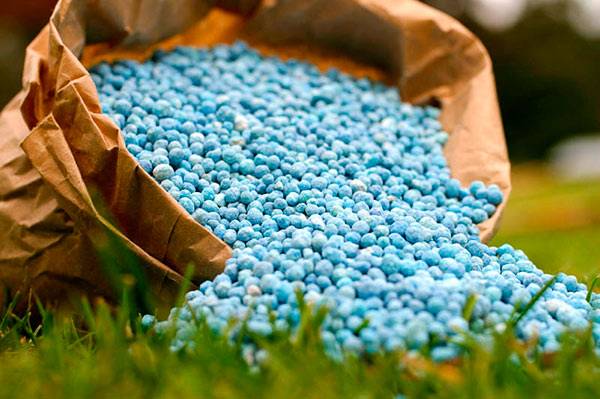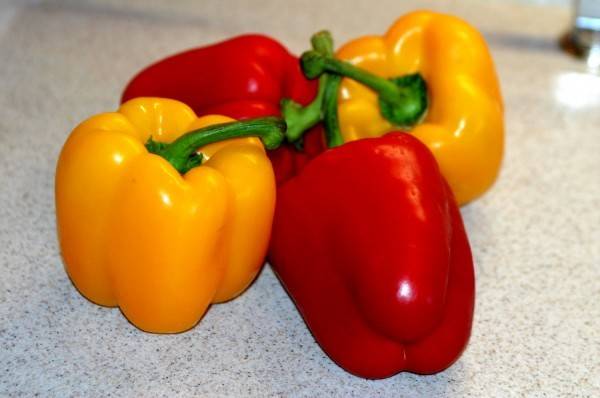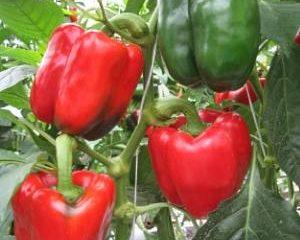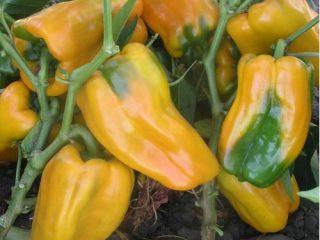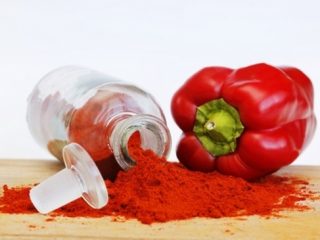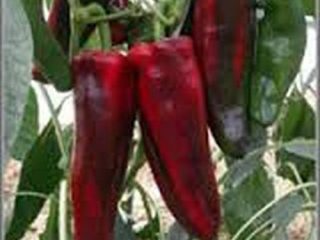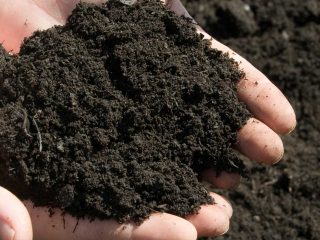Content
Pepper has long found its place in the garden of almost any garden in the country. The attitude towards him remains frivolous. Under the motto: “what has grown, has grown,” they do not show much concern for it. The result is that the quantity and quality of the harvest suffers. The fruits do not ripen and do not acquire the required sweetness and aroma. Although caring for this crop is no more difficult than growing tomatoes. You just need to know the characteristics and preferences of peppers. The most important condition for the growth of all living organisms is nutrition. Therefore, the most important activity will be to study information on the topic: how to feed pepper seedlings.
First food - soil
The initial nutritional power is given to the plant by the soil in which the seed is embedded. Each garden crop has its own preferred soil composition. Most of our vegetables are foreign in origin. This means that their ancestors grew up under different conditions and on different soils. Therefore, ordinary soil from the garden will not be as useful for them as special priming.
You can buy specialized soil for pepper seedlings, or you can prepare it based on the desired composition. Moreover, the soil on store shelves does not always meet the requirements. There are different variations in preparing soil for pepper seedlings:
- Peat, humus and garden soil are of the same volume. Plus a half-liter jar for a bucket of ash from burning wood. Superphosphate in the amount of 2 matchboxes.
- River sand, humus, garden soil, peat in equal proportions.
- The soil is combined with sand and peat equally, watered with a nutrient composition of water dissolved in a bucket, superphosphate, potassium sulfate (30 g) and urea (10 g).
- Garden soil, turf, river sand and compost with the addition of ash, the ratio is a glass per bucket of the mixture.
- One part sand and compost to two parts turf.
- Take equal parts of leaf humus and garden soil, dilute with a small amount of sand and vermiculite.
- For three parts of ordinary soil, take one part of sawdust and river sand.
- Mix equal amounts of peat and humus, fertilize with superphosphate and potassium sulfate.
- Mix soil, sand and humus in equal parts, fertilize with a small amount of ash.
The main aspect of preparing nutritious soil for pepper seedlings is to achieve a light porous structure and a balanced mineral composition.
First feeding of pepper seedlings
There is an opinion what to feed seedlings pepper should be started only after diving. Others carry out the first feeding before picking. The seeds have already been planted in carefully prepared nutrient soil and the first leaves have appeared. This means it’s time to feed the seedlings with the first feeding. Give impetus for subsequent growth.To do this, you need to dilute the following microelements in a liter of water:
- Any potash fertilizer 1 part;
- Ammonium nitrate ½ part;
- Superphosphate 3 parts.
All components must be thoroughly dissolved in warm water at a temperature of at least 20 degrees. This mixture is used to lightly water pepper seedlings. Before fertilizing, it is necessary to water the sprouts with clean water several hours before feeding. This technique will allow the fertilizer to be evenly distributed in the soil and not burn the delicate roots of the plant.
There are analogues among natural fertilizers. A good first feeding for the growth of pepper seedlings can be a mixture of nettle infusion with ash. However, a problem creeps in here: in mid-latitudes, during the initial growth of seedlings, there are no nettles yet. There is a way out - prepare fertilizer from dry grass:
- To do this, 100 g of dried nettle leaf is placed in a three-liter jar of water at room temperature;
- The liquid should only reach the shoulders of the jar;
- Place the container with the solution in a warm place;
- As soon as the fermentation process begins and there is an unpleasant smell, cover the jar with plastic wrap, securing it with an elastic band on the neck of the jar;
- This infusion should be infused for 2 weeks. It is shaken twice a day;
- The finished solution has the smell of fresh manure.
Ready-made fertilizer for pepper seedlings should be diluted with water, proportion 1 to 2, and add 2 tbsp. l. ash. Water as usual.
The process of preparing such a natural fertilizer is very long, but the resulting composition acts on pepper seedlings as a growth stimulator.
The finished composition can be stored all season in an opaque container in a cool place.
Second feeding
The second feeding of pepper seedlings is carried out 2 weeks after the first. The difference between the second nutrient mixture and the first is that phosphorus and other macro and microelements are added to the nitrogen-potassium composition. A wide range of such fertilizers can be found on the shelves of specialized stores:
- Kemira-Lux. For 10 liters of water you need 20 grams of fertilizer;
- Crystal. In the same proportions;
- Compound fertilizer made of superphosphate (70 g) and potassium salt (30 g).
Purchased fertilizer for pepper seedlings can be replaced with an ash solution, which contains phosphorus, potassium and other elements. Ash can come from burning wood, tops and plant residues, and weeds. The best composition with a high phosphorus content is ash from burning deciduous wood.
Substances from their combustion pollute the earth, have a negative effect on plants, and are carcinogens.
According to professionals, you should not overdo it with nitrogen fertilizers. Otherwise, you can get a powerful green bush with a meager harvest. Therefore, if the soil for pepper seedlings was prepared correctly and contains humus, then nitrogen with the second fertilizing will be superfluous.
The next feeding will be necessary only after planting the pepper seedlings in the ground.
Method of preparation and use of ash solution
100 grams of ash are poured into a 10 liter bucket of water, mixed and infused for 24 hours. Ash will not dissolve in water, but will saturate it with useful microelements. Therefore, you should not be upset when you see all the ash in the sediment.Before use, you can stir and water the pepper seedlings again.
Helping weak plants
Watering weakened seedlings with a special liquid will help. It is prepared from used tea leaves. Only loose leaf tea is suitable. Fill a glass of tea leaves with 3 liters of hot water. Infuses for 5 days. Used for watering.
Traditional methods of feeding pepper seedlings
All the methods described below, although they are folk, because they are passed on from mouth to mouth, still have a scientific basis. They contain substances necessary for nutrition, so they are suitable for feeding pepper seedlings.
Yeast growth stimulator
Yeast contains phosphorus and other useful elements, and is also a source of nitrogen. Yeast feeding It nourishes not only the plant, but also the microorganisms that live in the soil. These organisms are beneficial soil microflora. The disadvantage of this fertilizer is that it eats up potassium, so after using it, it is useful to use potassium fertilizers, or simply ash. It’s easy to prepare this fertilizer to feed pepper seedlings:
- Dry yeast - a tablespoon, pressed yeast - 50 grams should be dissolved in 3 liters of warm (not higher than 38 degrees) water, add 2-3 tablespoons of sugar.
- Leave the prepared mixture to stand for 24 hours.
- Dilute 1 liter of the resulting fermented liquid into a 10 liter bucket of water.
- Fertilize by watering.
This feeding stimulates the growth of the plant itself, not the fruit, so it is carried out before flowering begins.
Green brew
The basis of such fertilizer is often nettle, but dandelion, wormwood, yarrow, and tomato tops are suitable. It is better to prepare such an infusion somewhere aside, because it has a terribly unpleasant smell.
Cooking method:
- Collect herbs without seeds and place them at the bottom of the container. The amount of grass should be such as to fill the barrel by 1/6 of the volume.
- Fill the container with warm water, almost reaching the top.
- To speed up the fermentation process, you can add a humate solution. For 50 liters you need to take 5 tsp.
- Leave for 5-7 days in a warm place.
- The prepared liquid is diluted for irrigation with water. A 10-liter bucket requires a liter of green mash.
This is the best homemade feeding pepper seedlings, so they use it once every 2 weeks, throughout the season.
Onion happiness
Dry onion peels make an excellent fertilizer for pepper seedlings with elements of protection against harmful microorganisms. You need to pour 10 g of husk into 3 liters of warm water and leave for 3-5 days. You can replace water for watering seedlings with this solution. Onion peels contain many microelements.
Banana peel
Potash fertilizers are the main thing you need to fertilize pepper seedlings during the period of fruit growth. Potassium is always necessary; it is what gives fruits their fleshiness and sweetness. Banana peel, like the fruit itself, contains large amounts of this element. It is dried, crushed and added to water for irrigation. Infuse fresh peels in water. They burn it to ashes. Simply cut into small pieces and put in the ground. This is a good analogue of potassium fertilizer.
Energy
Energy fertilizers include potato broth. The starch contained in potatoes gives pepper seedlings energy for growth and other processes. Sweet water works similarly: 2 tsp.per glass of water.
Manure and bird droppings
Pepper seedlings react extremely negatively to nitrogen fertilizing in the form of manure infusions. Such a diet can lead to putrefactive diseases. If the use of these infusions is the only way to fertilize with nitrogen, then the use of bird droppings will be better than the manure option. Preparing fertilizer for pepper seedlings from bird droppings:
- 2 parts of bird droppings are diluted with 1 part of water;
- Infuse in a sealed container for 3 days;
- For feeding, dilute with water, 1 part to 10 parts water.
The role of microelements in feeding
The main constituents of various fertilizers are potassium, phosphorus and nitrogen. There are a bunch of other substances that take part in the life processes of pepper seedlings, but it is this trio that plays the main role.
Potassium
The main merit of this element is the beauty, sweet taste, fleshiness, health and size of the fruit. Therefore, it is necessary to rely heavily on potassium fertilizers during fruiting. But it is necessary, starting with laying the soil for pepper seedlings. The best source besides artificial fertilizers is wood ash.
Phosphorus
Phosphorus is an active participant in all metabolic and construction processes of pepper seedlings. He himself is an integral part of greenery. Therefore, it is vital for health and resistance to adverse conditions. Again, in addition to artificial superphosphate, it is found in large quantities in ash.
Nitrogen
Pepper seedlings need nitrogen from various compounds as a growth vitamin. The presence of nitrogen helps the green mass of plants to grow and increases productivity. Nitrogen is quickly washed out and processed by microorganisms, so it is often not enough.Excesses can make the fruit dangerous due to its high nitrate content. These fertilizers are needed once every 2 weeks in small quantities. Sources include green mash, yeast infusion, and bird droppings fertilizer.
Applying fertilizers to a permanent location
When planting pepper seedlings, fertilizers are placed in the holes. It must be said that fertilizers for pepper seedlings are equally useful for eggplant seedlings.
Options for laying fertilizers:
- 1 tbsp. humus can be mixed with soil and a handful of wood ash.
- Water the holes with a solution of mullein or bird droppings.
- Mix 30 grams with soil. superphosphate plus 15 g. potassium chloride.
Plants planted in this way do not need feeding for at least 2 weeks.
Conclusion
During the entire growth period of pepper seedlings, it is enough to carry out 2 feedings. The first is predominantly nitrogen content. Before or after picking depends on your desire. The only thing is that 2-3 days should pass before picking after feeding. Properly prepared soil does not require frequent and abundant fertilizing. Fattening of plants, when there is an abundance of green mass beyond measure, indicates that it is time to go on a diet of clean water.
The choice of fertilizer for pepper seedlings from those offered in stores or homemade mixtures depends entirely on the personal preferences of the vegetable grower.
